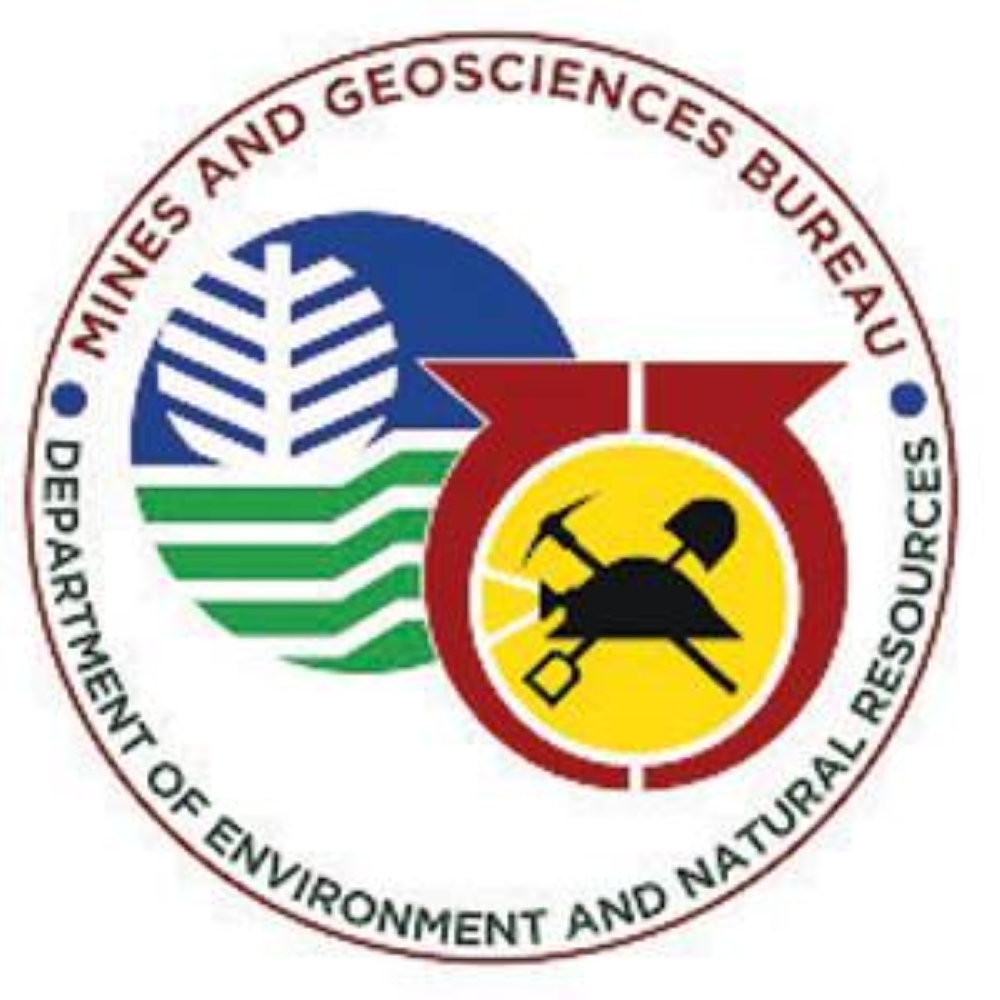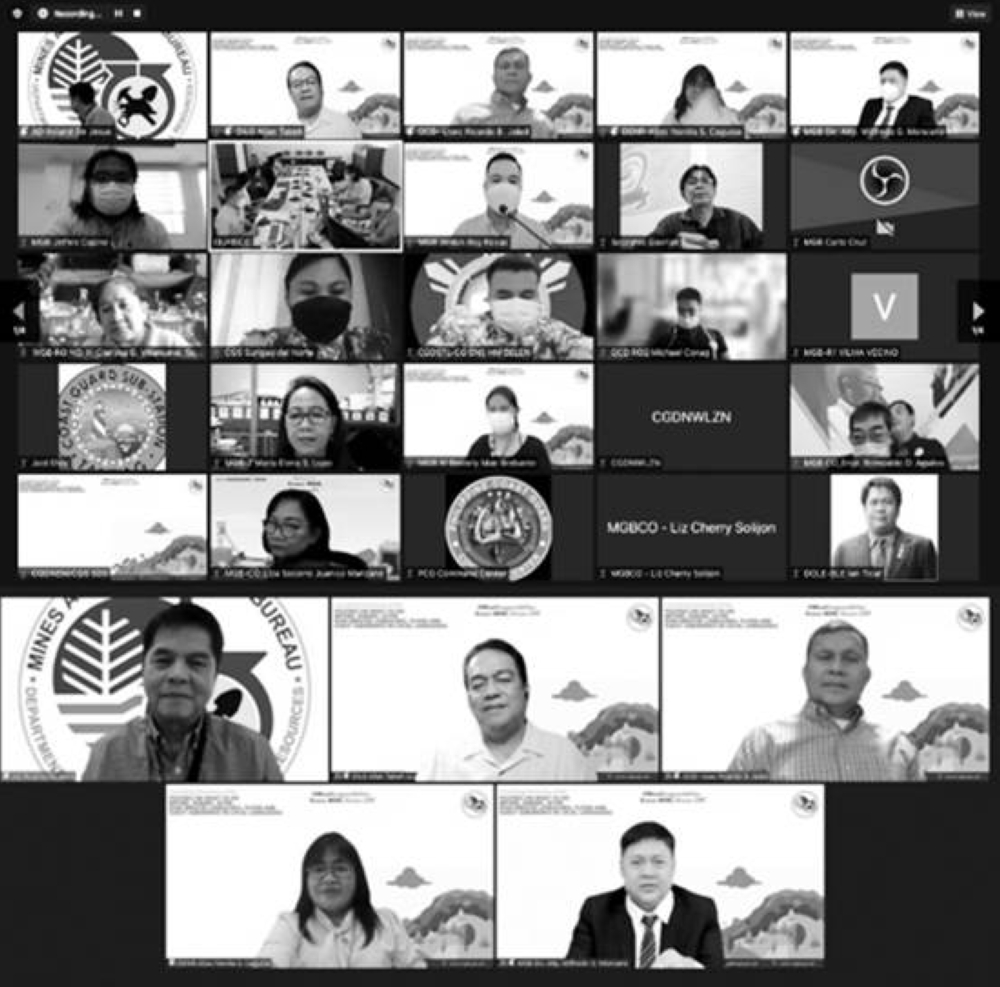As the Mines and Geosciences Bureau (MGB) celebrates its 123rd founding anniversary with the #MineResponsibility campaign, it shows that the journey has not been easy hurdling obstacles especially environmental concerns.

MGB Director Atty. Wilfredo Moncano said the agency’s campaign presents a clearer and more factual image of the mining industry in the country and promotes an inclusive approach in ensuring the protection of the environment as well as social development to contribute to the economic recovery as the country reels from the impact of the Covid-19 pandemic.
MGB developed a Safety and Health, Environment, and Social Development and Management (SHES) Manual that is inclined with the principle of sustainable development both pro-people and pro-environment.
Under Memorandum Circular (MC) No. 2021-006, the manual serves as a guide for mining contractors/permit holders/permittees in the development of project-specific SHES management practices. The preparation and implementation of various plans and programs are pursuant to the provisions of Republic Act (RA) No. 7942 or the Philippine Mining Act of 1995 and its Revised Implementing Rules and Regulations (IRR).
“This Memorandum Circular shall cover the preparation, approval, and implementation of the Safety and Health Program, Environmental Work Program, Environmental Protection and Enhancement Program, Final Mine Rehabilitation and/or Decommissioning Plan, and Social and Development Management Program of all existing and proposed explorations, mining and mineral processing projects that are covered by RA No. 7942,” the MC reads.
Moncano instructed its regional offices to allow mining companies to realign their unutilized Social Development and Management Program (SDMP) funds to support the affected communities at the height of the health crisis in 2020.
The industry has committed P19.542 million for its SDMP, which includes the P6.5 million provided by permit holders in Region 6 for cash and food assistance to communities. Companies committed P25.332 million for their environmental protection and rehabilitation programs.
Mining industry spurs economic growth amid pandemic
The mining industry contributed P102.3 billion to the gross domestic product (GDP) in 2020, amid the pandemic. The Department of Environment and Natural Resources (DENR)-MGB estimated the metallic mineral production value of gold, nickel ore, mixed nickel-cobalt sulfide, scandium oxalate, chromite and iron at P132.69 billion. The total value of minerals, mineral products, and non-metallic mineral manufacture exported in the past year was at $5.2 billion.
The minerals industry contributed about P25.52 billion from national and local taxes, fees and royalties. The mining sector has allocated P379 billion for the implementation of the Environmental Protection and Enhancement Program as of December 2020. The mining and quarrying activities generated 184,000 jobs. Around P25.71 billion was committed for the SDMP. A total of 36.87 million seedlings have also been planted in 28,717.37 hectares of land for the mining forest program as of December 2020.
Metallic mineral production value
The metallic mineral production value grew by 22.34 percent from P99.03 billion in January to September 2020 to P121.16 billion in the same period in 2021. The strong metal price coupled with the better mine production of nickel ore was the vital factor for this development.

Prices of leading metals gold, silver, copper and nickel remained bullish, year-on-year. Precious metals gold and silver reported an average price of $1,801.97 per troy ounce and $25.77 per troy ounce respectively, from $1,735.39 per troy ounce and $19.21 per troy ounce, year-on-year, up by almost $67 and $7, respectively. The nine-month averages for copper and nickel stood at $9,187.81 per metric ton and $18,035.15 per metric ton, respectively. MGB saw copper price went up by 57 percent from $5,837.89 per metric ton, while nickel posted a 38-percent increase from $13,059.28 per metric ton.
Statistical data from the Mines and Geosciences Bureau 6 showed that for the last 10 years, approved tenement covers only 1.6 percent of the region’s total land area or 33,041.2518 hectares. It has 15 mineral production sharing agreement (MPSA), one exploration permit, two industrial sand and gravel (ISAG) and currently, 21 mineral processing permit (MPP) issued by MGB 6 covering the different provinces of Region 6.
Mining companies have conducted exploration works, however, none has progressed into development, production and commercial utilization.
Mining and quarrying, the main contributor to industry growth posted a double-digit growth of 23.5 percent in 2020, according to the National Economic Development Authority (NEDA) report. The demand for construction aggregate has seen an increase in the past years. Production and utilization of coal is lumped as well in the mining and quarrying sector.
In 2020, gross output from non-metallic minerals amounted to P788.99 million. MGB 6 saw a decrease in the collection of occupational fees in 2020 due to the pandemic. Since the closure of two large-scale metallic mines in Southern Negros Occidental early in 2000, there has been no large-scale mining operation in Region 6. The mining industry has yet to meet its full potential to make a more significant contribution to the economic growth and rural development.
DENR signs IRR
Environment and Natural Resources Secretary Roy Cimatu signed the implementing rules and regulations (IRR) of Executive Order (EO) No. 130 through DENR Administrative Order No. 2021-25. The Duterte administration is institutionalizing and implementing reforms in the mining sector. It provides policies and guidelines to ensure environmental protection and responsible mining in the utilization of mineral resources.
President Rodrigo Duterte signed EO No. 130 on April 14, 2021, which amended the provision of Section 4 of EO No. 79, which was issued by former President Benigno Aquino 3rd in 2012, effectively lifting the nine-year moratorium on new mining projects. The IRR provides streamlined procedures and requirements for the processing and approval of new mining applications. The IRR enables renegotiation of existing mining contracts and agreements to maximize government revenues and share from production. It reviews and recommends appropriate measures to rationalize existing sharing schemes and mechanisms. It declared the areas covered by mineral agreements into mineral reservation, and strictly implements mine safety, environment and social development policies.
The IRR is expected to be a key driver in the country’s post-Covid recovery, by ushering in significant economic benefits through increased direct investments, additional employment opportunities in rural areas, and support to government’s Build, Build, Build program.
Cimatu said DENR continues to strictly monitor the operation of mining companies and strengthen the implementation of their safety and health, environmental and social development, and management programs.
Most of the technical staff of MGB have ample training in environmental and social sciences from Australia, Japan, Netherlands, France or Sweden. MGB has the technical capability to monitor the environmental management and social development compliances of mining companies. It is equipped with a modern laboratory and field equipment for on-site analysis.
MGB said responsible mining and environmental protection can co-exist. Modern and responsible mining does not destroy the environment, it just alters it to another land use. The future use of the land after mining is designed and planned even before mining starts. The government also requires that mining contractors institute an environmental protection and enhancement program before the mining operation starts.
Out of the country’s total land area of 30 million hectares, the total area covered by mining tenements as of 31 October 2021 is only 745,685.48 hectares or 2.48 percent. This only pertains to the permits issued by the national government and does not include the permits issued by the local government.
With EO 130, the government can approve mineral agreements. To date, there are 313 approved mineral production sharing agreements with a total land area of about 576,482.65 hectares. The said area is still subject to the mandatory relinquishment by contractors as provided by law.
Formalizing Minahang Bayan
MGB is working diligently on the formalization and declaration of the new Minahang Bayan (MB). To date, 43 MBs were declared all over the country with 170 pending applications. There are 13 MBs in Luzon, 3 in Visayas, and 27 in Mindanao.
“For metallic minerals, commodities will be limited only to gold, silver, and chromite and will have a two-year term, renewable for like periods but not to exceed a total term of six years. With MB very much in the scene, we are optimistic that gold, silver, and chromite production will rise,” MGB said.
Protecting IP rights
Under Section 16 of the Mining Act, “No ancestral land shall be opened for mining operations without the prior and informed consent of the indigenous cultural community concerned.” This is tacit protection of indigenous peoples rights.
In the event of an agreement with the indigenous community, royalty payments are also agreed upon by the parties. The said royalty shall form part of a trust fund for the socio-economic well-being of the indigenous cultural community.
The Mining Act of 1995 and its Revised Implementing Rules and Regulations, DAO 96-40, as amended ensures that environmental conditions are sustained over the life of the mine.
MGB noted that natural disasters bring great structural changes to the earth and impact the lives of Filipinos, and updating geohazard warnings is important in order to have widespread information on the hazard susceptibility of areas. It is useful for disaster preparedness and management.
PH mining dates back to Spanish era
MGB has a long history that dates back to the Spanish era. It was known as the Inspeccion General de Minas that took charge of the administration and disposition of minerals and mineral lands. However, it was abolished on July 1, 1886 but its functions and personnel were merged with the General Directorate of Civil Administration.
Under the Philippine Revolutionary Republic, Gen. Emilio Aguinaldo signed the decree creating the Departamento de Fomento, or the Department of Public Welfare on November 28, 1898. The following day, President Aguinaldo signed a decree creating the four divisions of Departamento de Fomento and one of them was the Industry and Agriculture Division. The Mines Section and the Mountains Sections were also formed.
During the American regime, a reorganization was implemented resulting in the emergence of the Mining Bureau by virtue of General Order No. 31, dated March 10, 1900. The administration of mining grants and claims instituted prior to April 11, 1899 was transferred by Act No. 916 from the Mining Bureau to the Public Lands.
In 1905, the Mining Bureau and the Bureau of Government Laboratories were fused under the Bureau of Science, and the Mining Bureau became the Division of Geology and Mines. On June 10, 1987, pursuant to EO No. 192, known as Reorganization Act of the DENR, the MGB became one of the staff bureaus of DENR.
The passage of Republic Act 7942, known as the Philippine Mining Act of 1995 on March 3, 1995, and DAO No. 96-40, the IRR of RA 7942, transformed the MGB into a line bureau. The staff bureau created under DAO 1, series of 1988 became the Central Office of the MGB, while Mines and Geosciences Development Service created under DAO 41, series of 1991 became the Regional Offices.
In 1997, by virtue of DAO 97-11, the MGB implemented a full reorganization specifically involving the establishment of two new divisions – the Mining Environment and Safety Division, and the Mine Tenement Management Division. It has essentially operationalized the sustainable development principles provision of the Mining Act of 1995.
The year after, the MGB commemorated its centennial year and from then on celebrated its anniversary every 29th of November. MGB’s acknowledgment as one of the centennial bureaus underscored the significance of the country’s management of mineral resources throughout the decades.
“The long history of MGB has only proven its unwavering commitment in championing sustainability in mining and geosciences,” MGB said.
